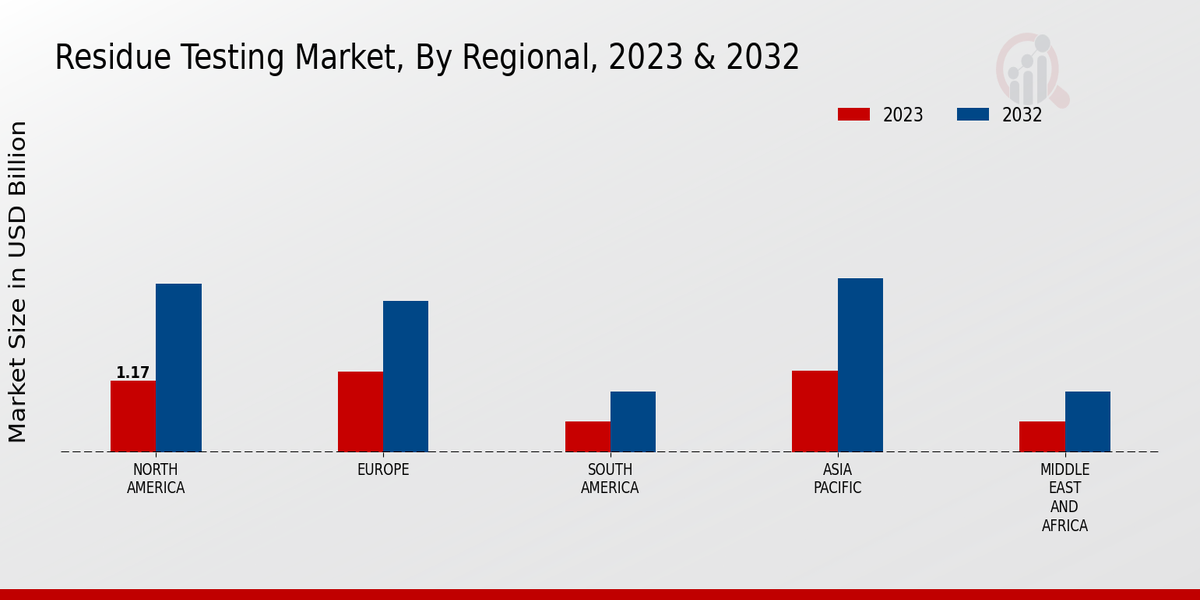Market Growth Projections
Rising Consumer Awareness
Consumer awareness regarding food safety and quality is a significant driver of the Global Residue Testing Market Industry. As individuals become increasingly informed about the potential health risks associated with pesticide residues and contaminants, they demand transparency from food producers. This heightened awareness has led to a greater emphasis on residue testing to ensure that food products meet safety standards. Retailers and manufacturers are responding by investing in testing technologies to reassure consumers. Consequently, the market is expected to grow at a CAGR of 7.63% from 2025 to 2035, indicating a robust shift towards safer food supply chains.
Technological Advancements
Technological innovations play a crucial role in shaping the Global Residue Testing Market Industry. The development of advanced analytical techniques, such as mass spectrometry and chromatography, has enhanced the sensitivity and accuracy of residue detection. These technologies enable laboratories to identify even trace amounts of contaminants, thereby improving food safety protocols. Furthermore, the integration of automation and artificial intelligence in testing processes streamlines operations and reduces turnaround times. As a result, the market is anticipated to expand significantly, with projections indicating a growth to 8.1 USD Billion by 2035, driven by the continuous evolution of testing methodologies.
Increasing Regulatory Standards
The Global Residue Testing Market Industry is experiencing a surge in demand due to the tightening of regulatory standards across various regions. Governments are implementing stringent guidelines to ensure food safety and protect public health. For instance, the European Union has established maximum residue limits for pesticides and veterinary drugs, compelling food producers to adopt residue testing practices. This regulatory landscape not only drives the need for advanced testing technologies but also fosters a culture of compliance among manufacturers. As a result, the market is projected to reach 3.61 USD Billion in 2024, reflecting the growing emphasis on safety and quality assurance in food production.
Global Trade and Export Dynamics
The dynamics of global trade and export are influencing the Global Residue Testing Market Industry. As countries engage in international trade, the need for compliance with varying residue testing standards becomes paramount. Exporters must ensure that their products meet the safety requirements of importing countries, which often necessitates rigorous testing. This trend is particularly evident in the agricultural sector, where residue testing is critical for accessing lucrative markets. The increasing volume of trade in food products is likely to bolster the demand for residue testing services, thereby contributing to the market's growth trajectory.
Emerging Markets and Agricultural Expansion
Emerging markets are becoming pivotal in the Global Residue Testing Market Industry as agricultural practices evolve. Countries in Asia, Africa, and Latin America are witnessing a surge in agricultural production, driven by population growth and urbanization. This expansion necessitates effective residue testing to ensure that food products are safe for consumption. As these regions adopt modern farming techniques, the demand for testing services is expected to rise. The interplay between agricultural growth and residue testing will likely create new opportunities for market players, further enhancing the industry's prospects.









